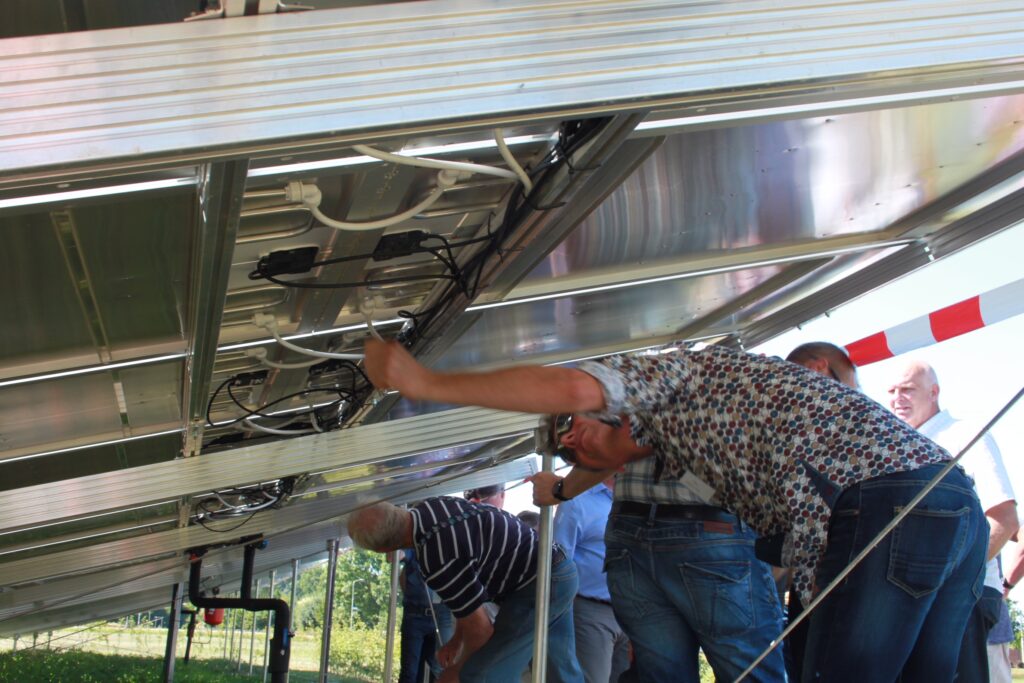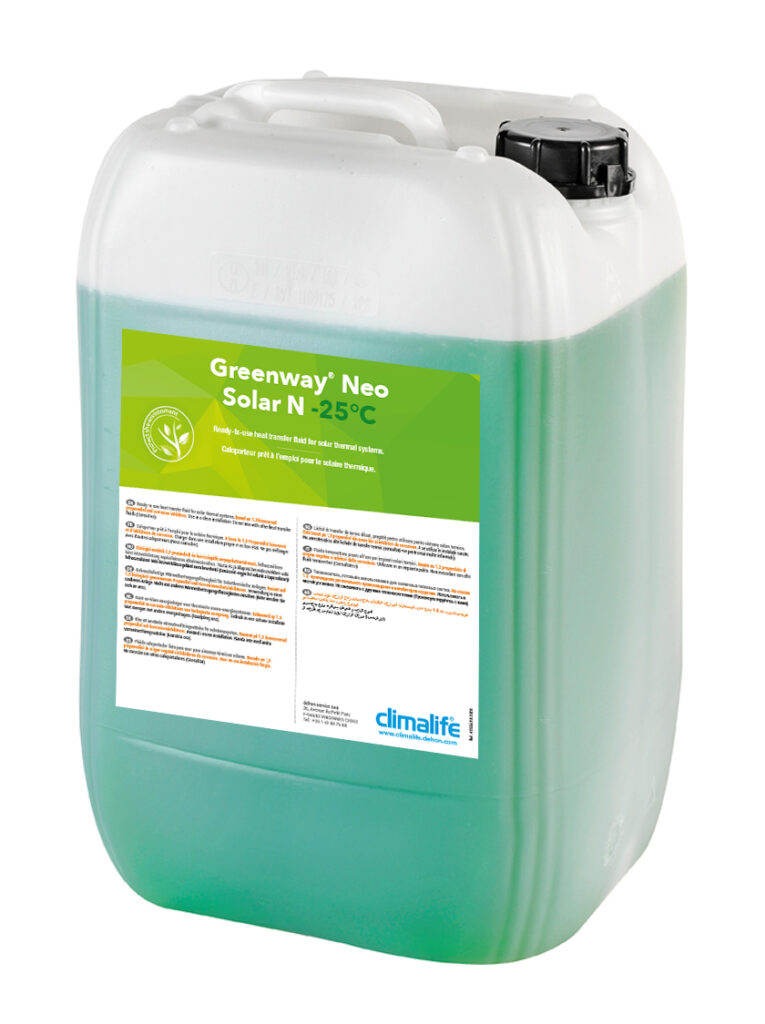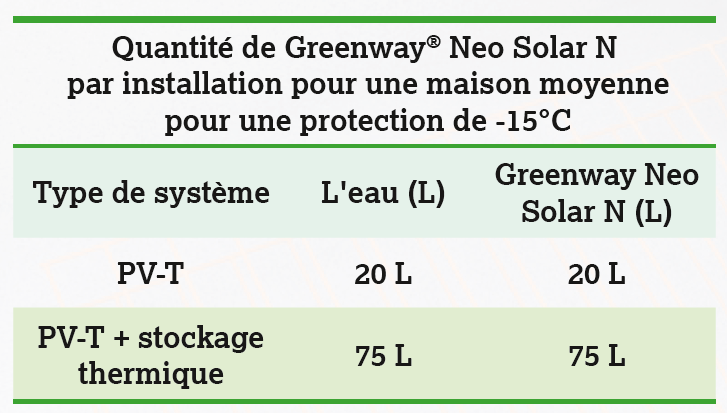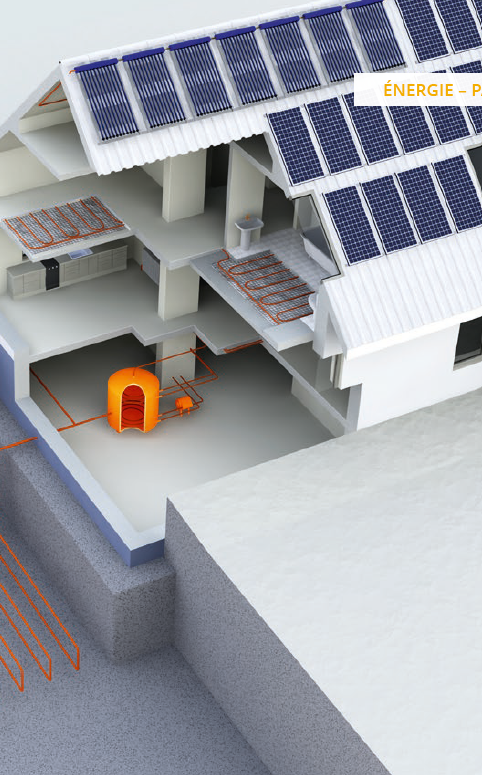Thanks to his expertise as an installer of renewable energy systems for many years, Jan Putman, director and developer of the concept, began developments on his innovation in 2013: the Solar Energy Booster. In 2014, the first tests were successfully carried out on a prototype and, thanks to local and European subsidies (Climate-KIC), the feasibility of bringing it to market was explored. In 2016, its innovation was awarded the Solar Keymark certificate, the main quality label for solar energy in Europe.
How the booster works
Aluminium booster panels are available in different sizes. Compatible with most photovoltaic (PV) panels, they are inserted invisibly at the rear, making the best possible use of the available roof surface.
Installing the Solar Energy Booster on a solar panel transforms it into a photovoltaic thermal panel (PV-T), enabling heat energy to be recovered.
The pipes are filled with Greenway® Neo Solar N, a heat transfer fluid manufactured by Climalife, which extracts the heat from the panel and transfers it to a storage tank, which will serve as a source for a heat pump.
When the heat is extracted, the solar panel cools down, so it can produce more solar energy.
“The booster can lower the temperature of the photovoltaic panel by up to 70 degrees in summer, increasing electrical efficiency by more than 20%. In winter, the electrical efficiency is virtually the same, increasing the panel’s average output by 8% a year”, explains Jan Putman.
The Solar Energy Booster thermal storage system

By connecting the thermal energy and additional electricity produced to a heat pump, a well-insulated building can be heated without gas.
“I’m convinced that a combination of systems can help us accelerate the energy transition”. It was from this conviction that Jan Putman developed the concept for the Solar Energy Booster source system. “We have an excellent product and the idea of constantly looking for new solutions has enabled us to become forerunners in the market.”
The system combines 3 energy technologies:
- PV-T panels with booster
- The heat pump
- The thermal storage system
The thermal energy collected by the PV-T panels and channelled to the heat pump via the Greenway® Neo Solar N heat transfer fluid is used to produce domestic hot water and heating.
Excess energy is transferred to a thermal storage system to be used in the event of insufficient production.
Greenway® Neo Solar N, the key to the whole process
“A heat pump can only work properly if it is supplied by the right source temperature, a solar panel can work beneficially if it can be cooled sufficiently, and a thermal storage system can work economically if the right fluid, in this case the heat transfer medium, is chosen,” Jan Putman points out.

Initially, a MEG-based heat transfer fluid was used, but as more and more projects are built with a thermal storage system in the ground, the demand for a sustainable, plant-based fluid has grown.
“Since we’re working with a thermal storage system of this type, we want to do it safely and efficiently and use the right fluids, as is the case here for the heat transfer fluid. In addition, it was important that its viscosity should be as low as possible”, says the head of Solar Energy Booster
Michael Van Beek, Sales Manager at Climalife, recommended using Greenway® Neo Solar N as a transfer fluid. Biodegradable and made from bio-sourced 1,3-propanediol, its use reduces the risk of soil contamination in the event of a leak, making it ideal for this application.
In addition, it does not degrade up to +200°C. “The heat transfer fluid must be able to withstand a certain temperature. We’re always talking about freezing, but it mustn’t burn either. It must remain stable and conform to its use. Greenway® Neo Solar N meets these requirements perfectly,” explains Jan Putman.

The advantages of the Solar Energy Booster source system
This process provides an ideal source temperature. In fact, it is possible to achieve a temperature of between 15°C and 30°C in summer and between 5°C and 15°C in winter.
“The graph below is the ultimate… we try to reproduce it every time in our systems”. says Jan Putman. Below, we can see that, at an outdoor temperature of 36°C, the source temperature is balanced between 30 and 15 degrees. This gives a COP* of 8.
What’s more, from an economic point of view, if the heat pump is supplied by an ideal source temperature, it is used less and can be replaced by a smaller model.
Award-winning innovation

In 2017, Jan Putman’s concept was awarded the Jan Terlouw Innovation Prize, which is awarded annually to the most sustainable and innovative entrepreneur in the eastern Netherlands.
It was the concept of phase change that won the award. At the transition temperature of water, for example, from +0°C to -0°C, there is 10 times more energy in changing its structure (from water to ice). Jan works with Heatstixx (MCP**) in a tank that allows him to choose a different transition temperature, for example from -15°C to +15°C, in order to provide a higher source temperature for the heat pump. This can improve the efficiency of the heat pump by 30%.
What does the future hold?
Now, the company’s aim is to introduce this type of energy concept more widely to the market. Together, we should strive to ensure that photovoltaic panels heat the entire building, with or without the presence of the sun. The energy transition is gathering pace and the market is open to innovative ideas like this.
Up until now, Jan Putman has always concentrated on his innovation, and now it’s time to extend it to transfer the knowledge and expertise he has acquired to the market via selected wholesalers, while retaining his role as consultant.
Solar Energy Booster always offers a sustainable solution and takes charge of the entire project, from assembly to delivery. The company employs three people, and calls on the services of consultants on specific subjects such as safety, the environment, subsidies, etc. The company currently covers the Netherlands but is keen to expand beyond its borders. The director is currently working with a consultant to look at opportunities in Belgium, where local standards, subsidies and regulations have to be taken into account.
*coefficient of performance **phase-change material

